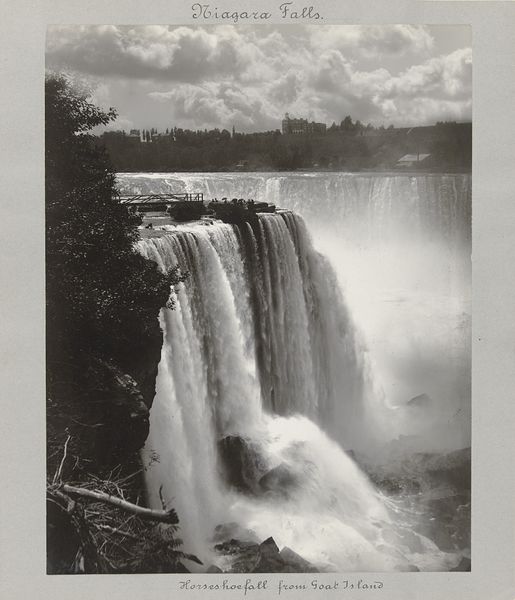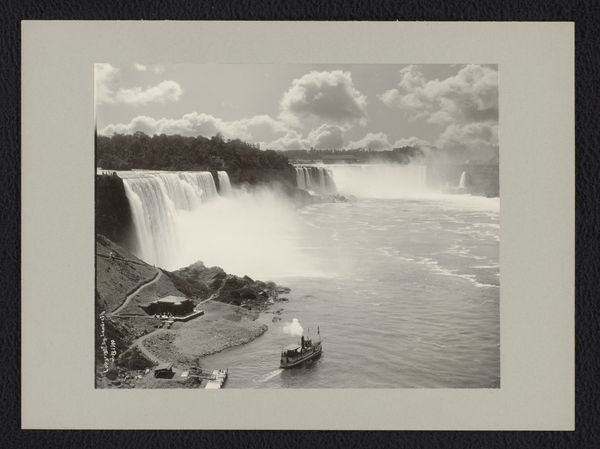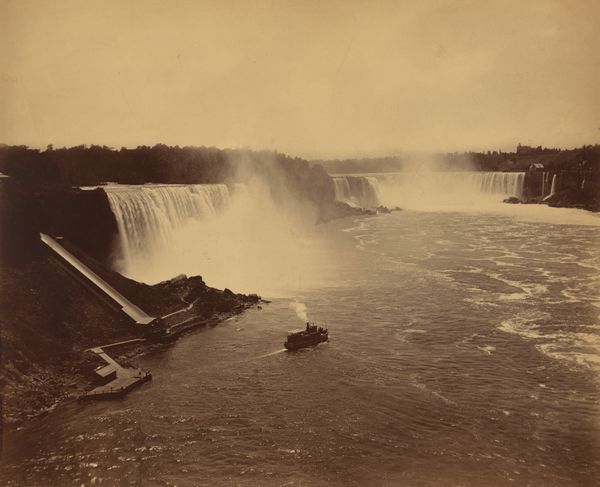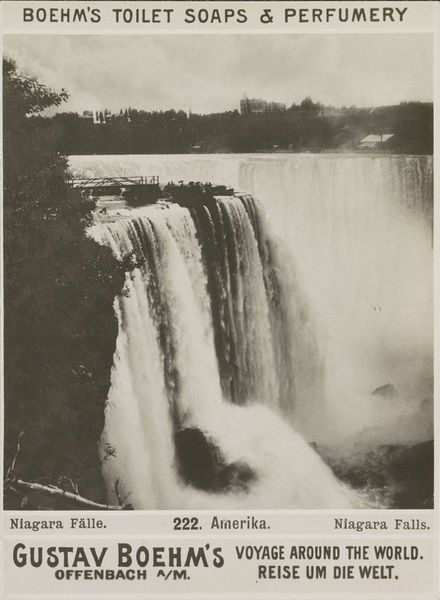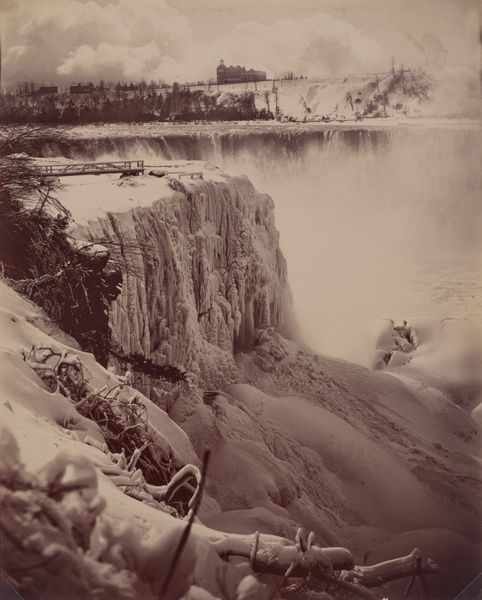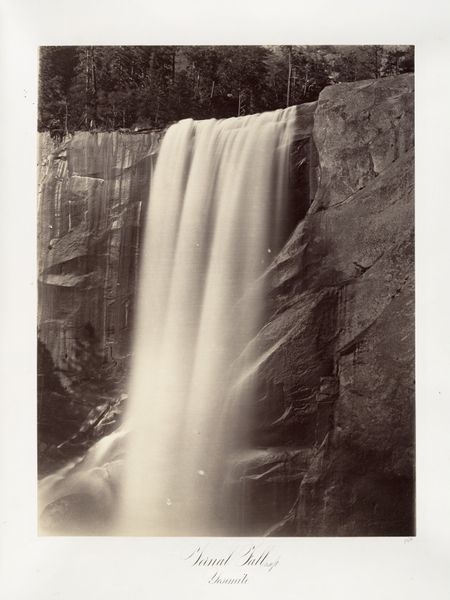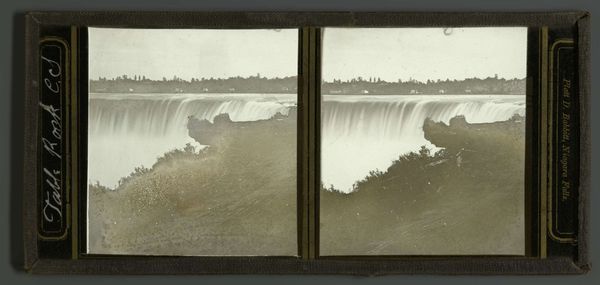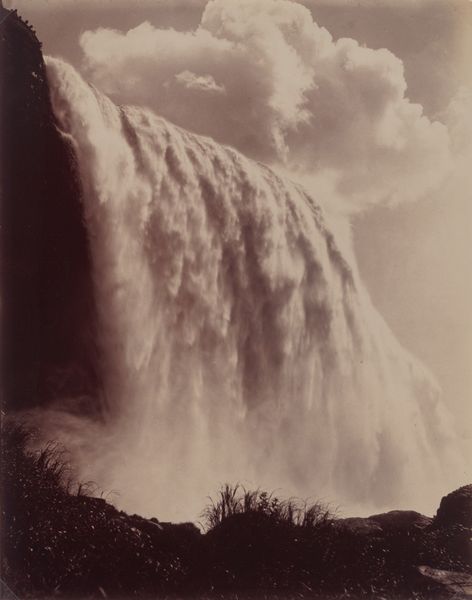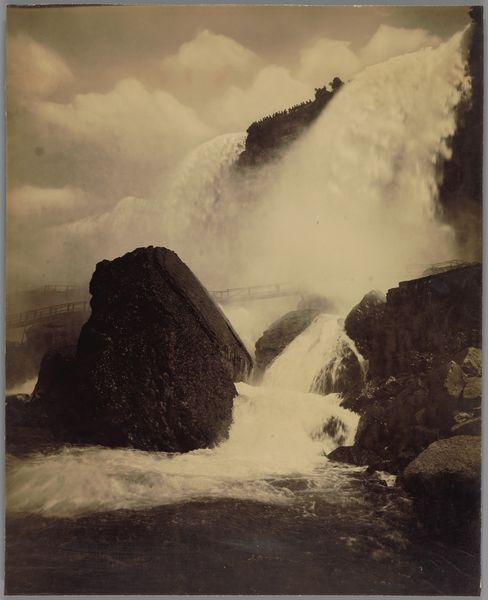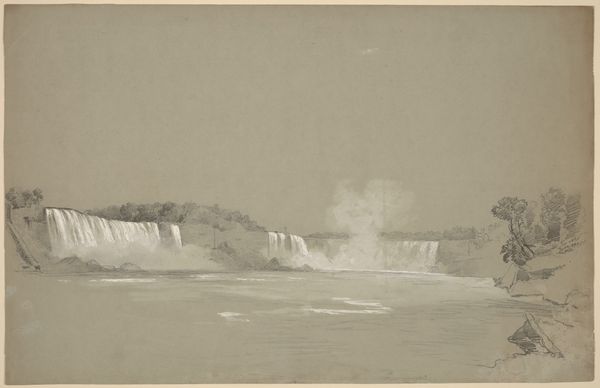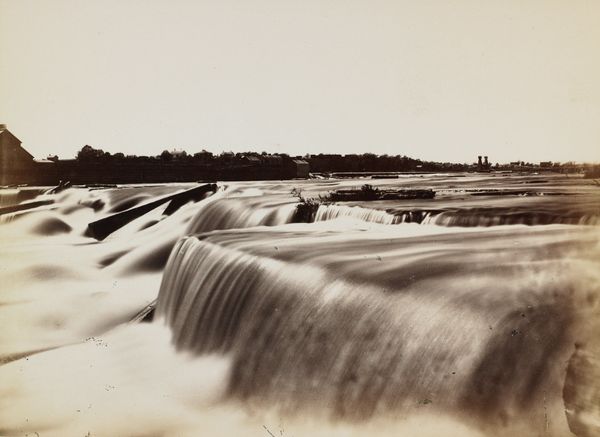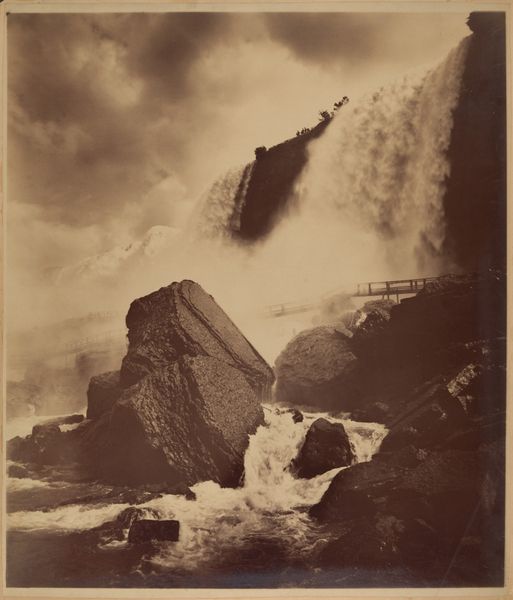
Dimensions: height 244 mm, width 189 mm, height 268 mm, width 230 mm
Copyright: Rijks Museum: Open Domain
Editor: Here we have H.F. Nielson's "Gezicht op de American Falls bij de Niagarawatervallen," a photograph taken sometime between 1898 and 1925. The soft focus and the tones create such a dramatic feel; almost romantic, really. What social or historical elements do you see at play in this image? Curator: This photograph reflects a particular moment in the history of landscape representation, specifically concerning American identity. Think about the late 19th and early 20th centuries. Niagara Falls had become a popular tourist destination, but also a symbol. A symbol of what, do you think? Editor: Well, it was the symbol of the natural grandeur of the United States, wasn't it? Kind of like the Grand Canyon became later? Curator: Exactly. And artists, particularly photographers working in Pictorialism, sought to capture this grandeur but also to elevate photography to the level of fine art. They manipulated their prints to mimic painting, blurring the lines between mechanical reproduction and artistic expression. Look at the vantage point chosen; the man-made bridge in the background seems to subtly coexist with the natural phenomenon. What do you make of that tension? Editor: That’s fascinating! It’s as if Nielson is acknowledging the growing human presence while still emphasizing the raw power of nature. I wonder if this also connects with debates surrounding conservation versus industrialization at that time? Curator: Absolutely. The photograph participates in a broader cultural conversation about how to balance progress and the preservation of natural wonders. Its circulation in exhibitions and publications also highlights the increasing institutional recognition of photography as a legitimate art form. So, while presenting an awe-inspiring view, Nielson's work simultaneously navigates the cultural politics of its time. Editor: That gives me so much to think about when looking at photography from this period. It's not just a pretty picture. Curator: Precisely! Art is rarely just "pretty." It's embedded within layers of meaning shaped by social and historical forces. Hopefully, that realization allows us to think more critically about it.
Comments
No comments
Be the first to comment and join the conversation on the ultimate creative platform.
